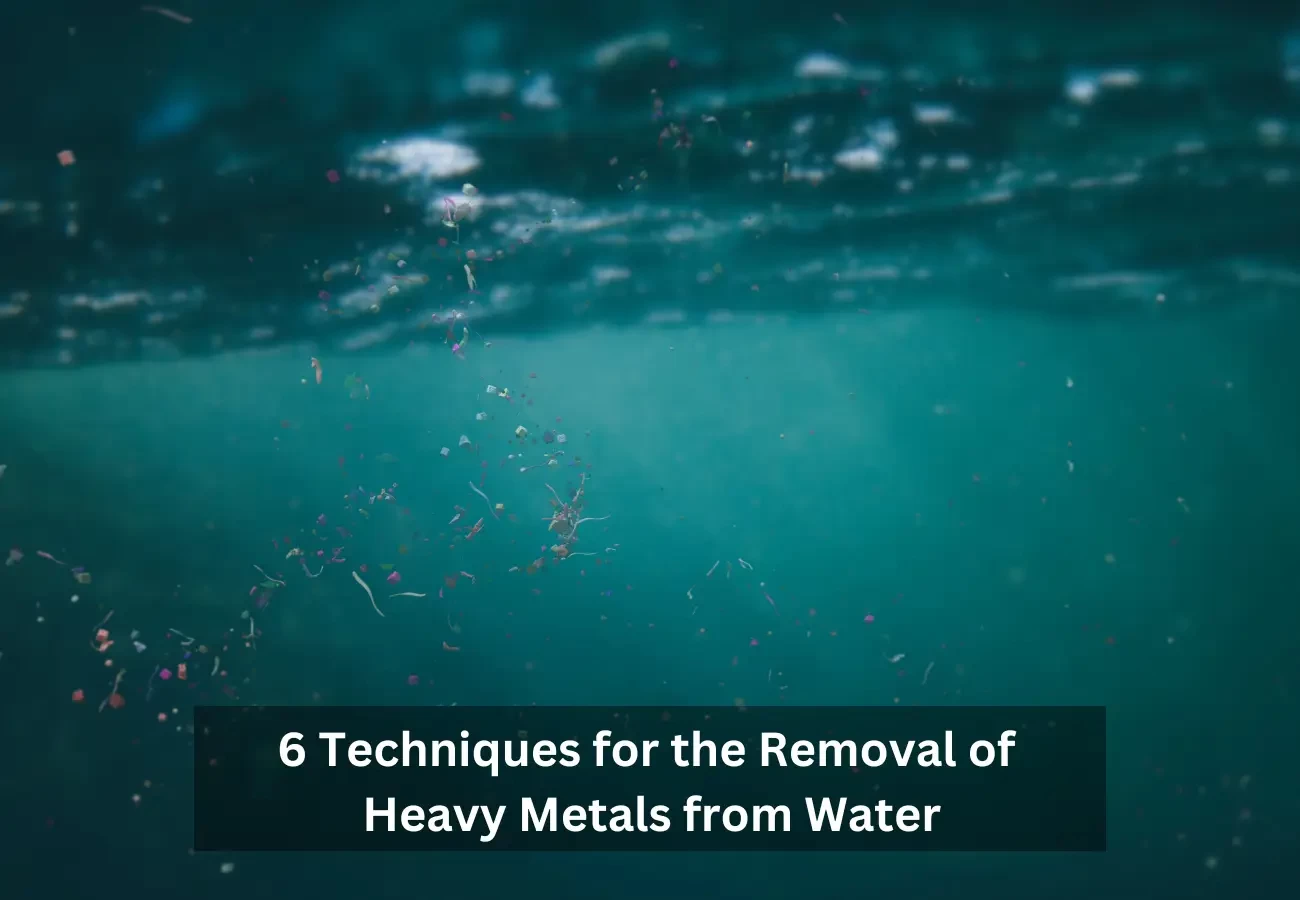6 Techniques for the Removal of Heavy Metals from Water
Heavy metals present a major environmental issue because of their toxicity and tendency to build up in living organisms. Even at low levels, they can lead to significant health risks for both humans and aquatic life. Common sources of heavy metal pollution in water include industrial discharges, mining operations, and agricultural runoff. As a result, effective water treatment methods are crucial for eliminating these contaminants and ensuring safe water for both human consumption and the health of ecosystems.
Various techniques are used to remove heavy metals. This blog post will explore some of the most widely used methods:
- Chemical Precipitation
Chemical precipitation is a commonly used and economical method for eliminating heavy metals from wastewater. This process involves converting dissolved metal ions into solid particles that can be removed through filtration or settling. It is particularly effective for metals such as copper, nickel, zinc, and cadmium. The precipitation process usually starts by adding a reagent that reacts with the heavy metals, resulting in the formation of insoluble precipitates, which are then separated through sedimentation or filtration. For instance, when sodium hydroxide (NaOH) is added, it raises the pH of the water, leading to the formation of metal hydroxides that precipitate out of the solution. After the heavy metals have been precipitated, they can be effectively removed by sedimentation or filtration. - Ion Exchange
Ion exchange is a method used in water treatment that replaces unwanted metal ions with more harmless ones, typically sodium or potassium, using a resin or similar ion-exchange material. This resin is designed with functional groups that specifically target certain metal ions. The ion exchange method is particularly effective in removing metals such as lead, cadmium, mercury, and copper from water. During the process, water flows through a bed of ion-exchange resin, where the metal ions are swapped for sodium or potassium ions. When the resin becomes saturated with heavy metals, it must be regenerated by rinsing it with a concentrated solution of another ion, which helps to remove the accumulated metals. - Adsorption
Adsorption is a popular method for extracting heavy metals from water. This technique works by allowing metal ions to attach to the surface of an adsorbent material. While activated carbon is the most frequently used adsorbent, natural options like clay, zeolites, and biochar are becoming more favoured due to their affordability and accessibility. The effectiveness of adsorption is influenced by various factors, such as the surface area of the adsorbent, the concentration of heavy metals present, and the pH level of the water. This method is particularly successful in removing metals like lead, copper, and arsenic. Once the adsorbent reaches its capacity for heavy metals, it can either be disposed of or regenerated for further use. - Membrane Filtration
Membrane filtration, particularly reverse osmosis (RO), utilizes pressure to push water through a semi-permeable membrane. This process allows only water molecules to pass while effectively blocking contaminants, including heavy metals. It is particularly efficient at removing various heavy metals such as lead, arsenic, cadmium, and mercury. RO is commonly found in both home water filtration systems and large-scale water treatment facilities. The method operates by establishing a pressure difference across the membrane, leading to the rejection of contaminants like heavy metals, while allowing purified water to flow through. However, it's important to note that RO systems generate a waste stream, which may also contain concentrated contaminants that require proper disposal. - Biological Treatment
Bioremediation is a technique that employs microorganisms to eliminate heavy metals from polluted water. Specific bacteria, fungi, and algae can either transform or immobilize heavy metals through processes like bioaccumulation, biosorption, and biotransformation. These organisms have the ability to absorb metals from water or change them into less harmful forms. Biological treatment can be combined with other methods, such as chemical precipitation or adsorption. While the application of biological treatment is still being researched for large-scale use, it has demonstrated potential in removing metals such as mercury and arsenic from contaminated water sources. - Electrodialysis
Electrodialysis (ED) is a process that utilizes membranes and an electric field to facilitate the movement of ions through selective ion-exchange membranes. It is particularly effective for treating water that contains high levels of dissolved salts and metals. In this process, positively charged metal ions are attracted to the cathode (the negative electrode), while negatively charged ions head toward the anode (the positive electrode), enabling the separation of heavy metals from the water.Electrodialysis is commonly applied to brackish water or water with high salinity, where reverse osmosis might not perform well. This method is especially valuable in desalination facilities that need to eliminate both salts and heavy metals.
In addition to the traditional methods mentioned earlier, several new technologies are being developed for the removal of heavy metals. These include:
- Electrocoagulation: This technique employs an electric current to produce coagulants on-site, which then facilitate the removal of heavy metals through precipitation.
- Phytoremediation: This approach utilizes plants to absorb and accumulate heavy metals from contaminated water and soil.
- Nanotechnology: This area investigates the use of nanomaterials, such as nanoparticles and nanotubes, for the removal of heavy metals.
These innovative technologies show great potential for achieving more efficient and sustainable heavy metal removal in the future.
Conclusion
Heavy metal contamination in water poses a significant environmental challenge that demands effective treatment solutions. Selecting the right removal technique depends on several factors, such as the type and concentration of heavy metals, the volume of wastewater, and cost considerations. Although traditional methods like chemical precipitation, ion exchange, adsorption, and membrane filtration are commonly employed, new technologies present promising alternatives for more sustainable and efficient heavy metal removal. As research and development progress, we can anticipate further advancements in this area, ultimately enhancing the protection of human health and the environment.


